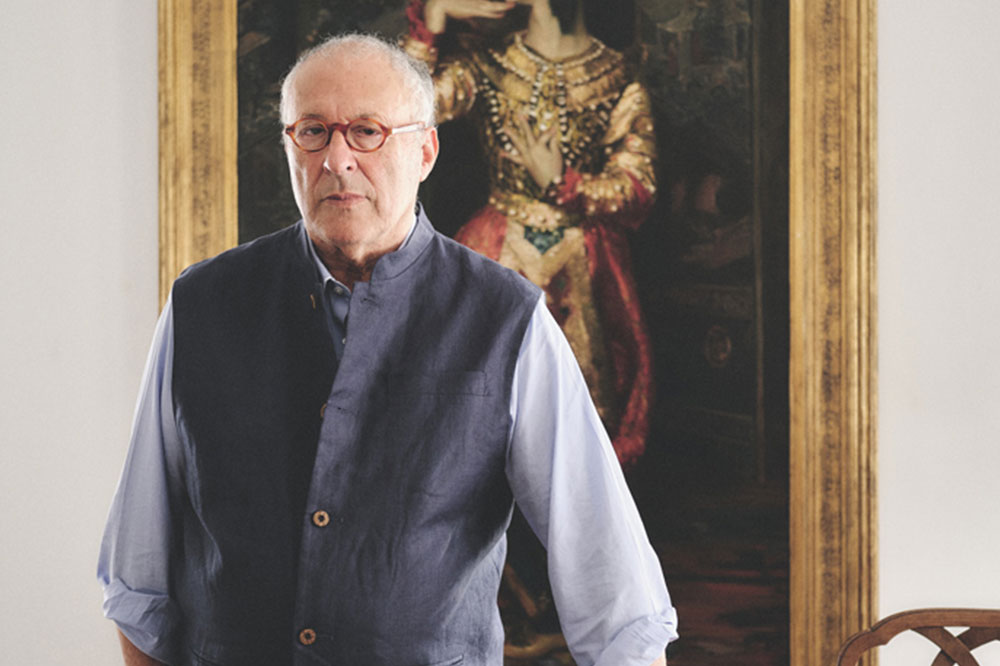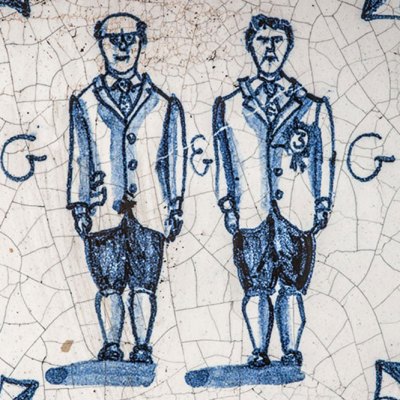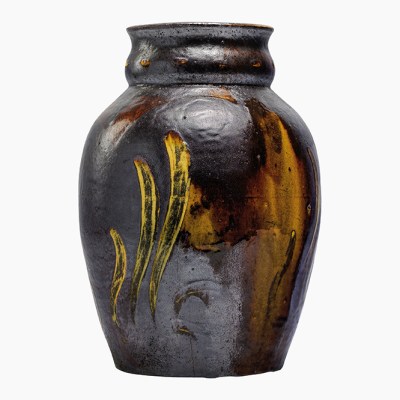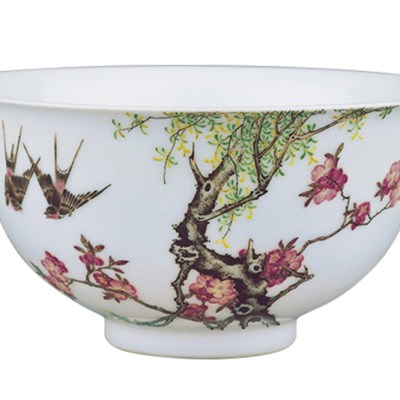From the October 2023 issue of Apollo. Preview and subscribe here.
So strong is his impulse to study and to acquire that London sculpture dealer Daniel Katz – Danny to almost all – forms parallel, constantly evolving collections for himself. It is a facet of his restless eye and intellectual curiosity that these are collections of very different and very particular works of art. Two things unite them. The first is the instinctive, visceral response each constituent work of art must elicit. The second is a level of quality hard to find – hence the myriad spheres of engagement. Katz is not a man to wait patiently to secure his latest gem.
But market rarity is not the sole frustration. As an avowed people-person, he has always learned not only by looking long and hard at museum collections, but also through long-term relationships with specialists in the field. ‘You can learn far more by talking to the person who wrote the book than by reading the book itself,’ he insists. It was an initial inability to find someone to guide him through unknown territory that explains a quarter-century hiatus in the building of what is perhaps his most surprising collection: Islamic pottery.
Katz is one of the world’s enthusiasts. A larger-than-life personality, he is self-confident, charismatic, generous and unpredictable, an autodidact uninhibited by a formal education – or anything else, for that matter. ‘Some would say a lack of formal education was a disadvantage in life, but it meant I was completely open, and free to be interested in and learn about whatever I wanted,’ he explains when we meet. The evidence of that is all around us – antiquities and Old Masters, Post-Impressionism and modern British art. ‘Don’t get me wrong. It was a hard slog. I worked at it – I never much liked holidays.’
He walked out of his much-hated school on his 14th birthday – the earliest possible date for leaving school at the time. ‘I could not adapt to the English school system. It was too rigid,’ he recalls. His parents moved to California for a better life during the 1950s when times were hard in Britain, and he grew up in Beverly Hills where his uncle, Ben Tobert – a key character in this story – was a silversmith: he made the chalice that features in the Hollywood epic The Silver Chalice (1954), Paul Newman’s first starring vehicle. The family returned to the UK in 1961. One day the young Danny was surfing on Malibu Beach; the next he found himself in a blizzard in Brighton. He believes it was the shock of leaving America and the misery of his new life that brought Tourette’s syndrome, the neurological condition he has suffered since the age of 11.
Tourette’s – which afflicts the sufferer with uncontrollable tics – is a handicap, but perhaps also explains his heightened sensitivity to works of art. ‘For me, it is not the eyes, but the stomach. I have a gut reaction, a physiological experience. When I see a Barbara Hepworth carving from the 1930s,’ he says, ‘I come over in a meditative state. I feel very soft, gentle and calm – something I am not used to being. When I see a Renaissance bronze, I get so excited that I can’t catch my breath’ – as he once remarked, it is just as well that he doesn’t play poker. ‘If I have to think about something, I’ll probably not buy it,’ he adds. ‘I usually make a decision in the first five seconds.’
Nothing is conventional about Katz. After school, he got a job in a bowling alley – and became the British junior champion. Then he worked at his parents’ petrol station until they went bankrupt. ‘I remember watching the TV when the bailiffs came in and took it away,’ he said. ‘It was humiliating. I vowed then that I would never borrow a penny in my life.’ He hasn’t. Having saved a few thousand pounds, his parents then opened an antiques shop in Brighton. ‘I took to it like a fish to sea,’ he says gleefully.
His life changed when the Hungarian-born collector Michael Travers walked into the shop, bought a bronze, and invited the 17-year-old Katz to his flat for tea with him and his wife. ‘I had never seen anything like it. There were Chinese jades, Renaissance bronzes, Sèvres porcelain, Persian carpets, Klimt and Schiele drawings and watercolours – a cornucopia of treasures. I sat down marvelling at these things.’ He was also curious about the music that was playing – Bach’s St Matthew Passion – and Travers turned up the volume and they sat listening for half an hour. ‘I was overwhelmed by it. I knew about the Beatles and Frank Sinatra, and that was about it.’
Travers not only introduced Katz to classical music, which became an enduring passion, but also gave him a letter of introduction to John Pope-Hennessy, then director of the Victoria and Albert Museum (Travers was his ophthalmologist). In turn, the Pope, as he was known, introduced him to Anthony Radcliffe, a young man out of film school who was to become one of the most gifted connoisseurs of Italian bronzes and terracottas of his generation.
Daniel Katz photographed in front of Jacques-Émile Blanche’s portrait of Nijinsky, in September 2023. Photo: Jasper Fry
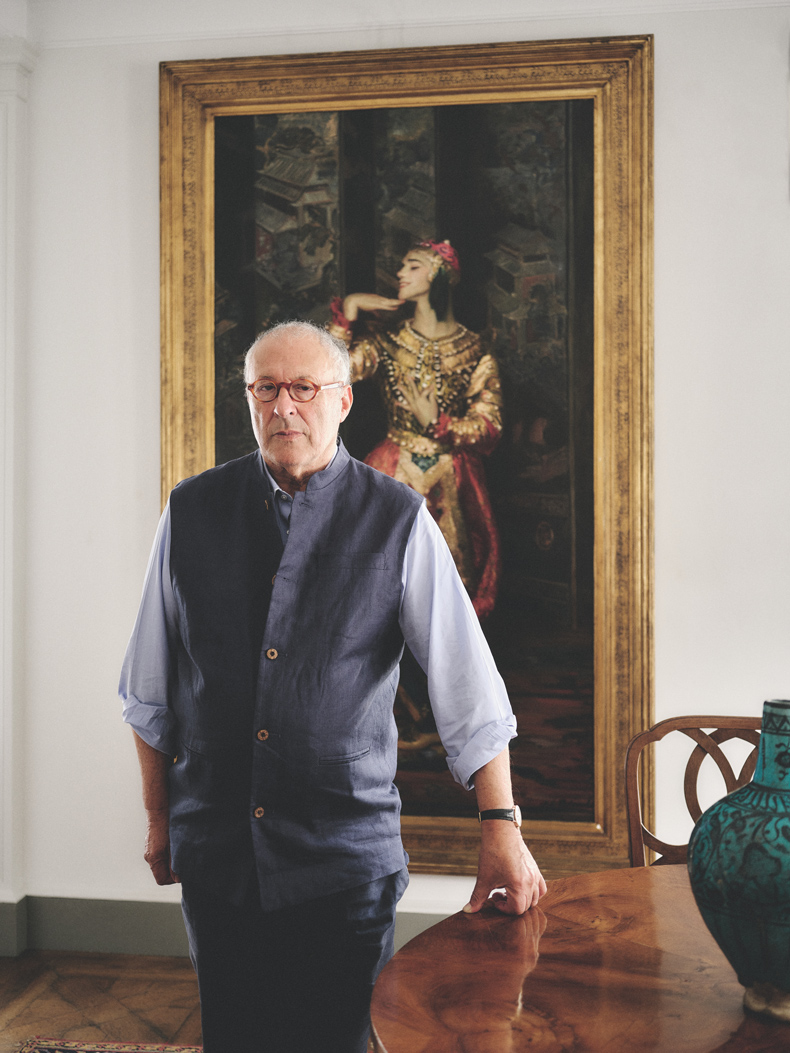
‘Tony Radcliffe took me under his wing, and I started learning about Renaissance bronzes. We became great friends, and remained so all his life’ (Radcliffe died in 2011). Katz adds, ‘My aim was to study every single bronze in the V&A – there are about 700 of them. I would spend the day in the museum, and every night in the disco – I fancied myself as a dancer of ballet as well as contemporary dance.’ (It is perhaps no coincidence that he chose to be photographed for Apollo in front of Jacques-Émile Blanche’s painting of Nijinsky reprising the ‘Danse siamoise’ he performed for the Ballets Russes production of Les Orientales in Paris in 1910. Beginning in the 1980s, Katz and his Norwegian wife, Gry Iverslien, have commissioned a great number of ballets, and much contemporary music.)
His education in fine art continued when in 1968 Cecil Lewis asked the 20-year-old Katz to run the Connaught Gallery, the antiquities dealership he had opened in Mount Street. Thrown in at the deep end, Katz relished the opportunity to immerse himself in the classical world. ‘The Parthenon marbles had an enormous influence on me. They changed my life. I still think there is nothing better than Greek art of the fifth century BC. We have not advanced since then.’
A few years later, in 1971, he leapt at the chance to go to Iran to visit the ancient sites with his uncle and cousin, invited by a family friend, the film director Lewis Gilbert (Alfie; The Spy Who Loved Me), to the Tehran Film Festival. They spent three or four weeks touring the whole country, from Kharg Island to Susa, Persepolis, Kashan, Isfahan, Shiraz and Qom. While Lewis bought some pots in the souks, Katz did not. ‘I was fascinated by them, but I did not buy anything until later that year when I bumped into Mansour Mokhtarzadeh, who had a gallery in London.’ His first acquisition was a dish from 13th-century Kashan of a glorious turquoise blue, impressed with what he sees as sturgeon – the ‘caviar bowl’, as he jokily calls it.
Bowl with fishes (13th century), Kashan, Iran. Photo: courtesy Daniel Katz Gallery
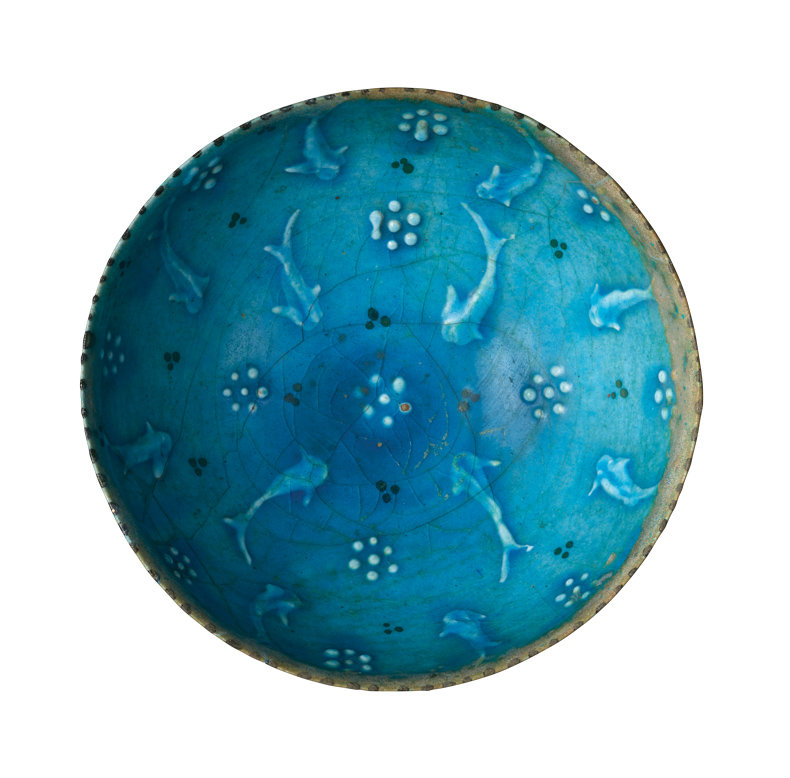
It is a beguiling piece, post-dating the Mongol invasion of what was then the Khwarazmian Empire, begun in 1219, and bears witness to the subsequent influence of China in both its uniform cobalt-blue glaze and the decoration of fish. It launched another life-long passion, for Iranian ceramics.
‘I was collecting everything at the time,’ Katz explains, ‘early photography – calotypes by William Henry Fox Tal- bot and David Octavius Hill – Renaissance bronzes, Greek red- and black-figure vases, Italian and Flemish mannerist paintings.’ He muses: ‘I can’t understand how some art historians, collectors or dealers specialise in one thing and never change. Everything leads to something else.’ Early Kashan wares were part of the mix. ‘They really do it for me,’ he says simply. ‘I am still learning about how and why they move me, but they are so beautiful. I love the intensity of colour, the shapes, the translucency of the glazes.’ He continued to buy from the few Iranian dealers with London galleries: ‘The problem was that I did not know anybody in the field to learn from, so I ended up selling the pieces to an American I knew.’
Moreover, Katz’s life took a dramatic turn in 1982 after he discovered in Sweden, grimy and dusty, a rare monumental marble by the great 16th-century sculptor Giambologna and sold it to the J. Paul Getty Museum. The scope of his dealing – and collecting – was transformed.
When the American collector subsequently offered his Iranian pottery at auction in 2011, Katz could not resist buying some of the pieces back (he almost always regrets selling anything, often taking the opportunity to reclaim a piece when it reappears on the market). This time he was fortunate enough to find mentors in the Islamic art specialists Stephen Wolff and, more recently, Melanie Gibson.
Now, however, the frustration was the lack of availability of works of art of the quality he required. ‘I did not know which direction to go in with the collection. I spent a lot of time looking in the V&A and British Museum.’ He had already acquired several impressive Kashan wares, not least a pre-Mongol black, blue and white conical bowl decorated with a carved openwork spiral band filled with a transparent glaze. Astonishingly light and as thin as a knife-edge, it is a technical tour de force and a testimony to the skill of the Kashan master potters. Given the stiffness of the silica-rich body, such pieces were probably moulded rather than thrown.
Bowl with interlaced star motif and pierced openwork (13th century), Kashan, Iran. Photo: courtesy Daniel Katz Gallery
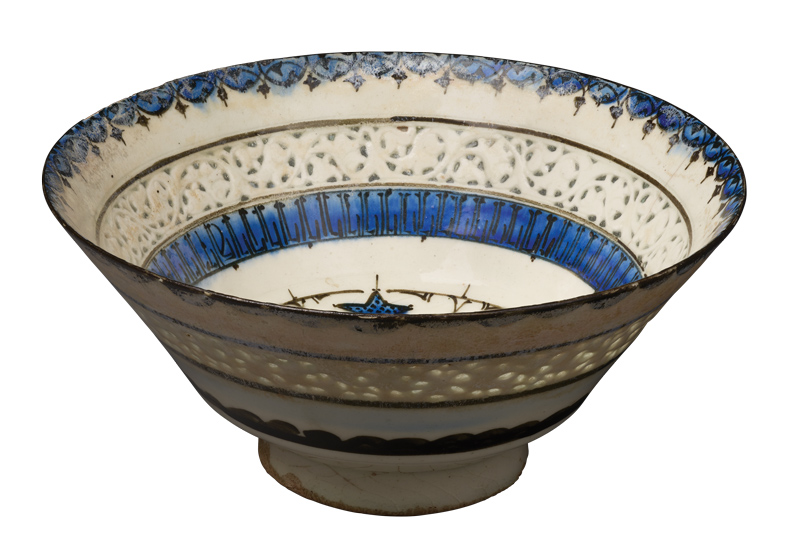
A remarkable dish from c. 1170–1220 bears two bands of poetry inside the inner rim, one scratched into the lustre, as well as depicting a crowd of people. Figuration is not uncommon in secular Islamic works of art. Moreover, the Kashan potters were unusually literate, often writing their own verse. The figures here, probably courtiers, cluster under a canopy possibly symbolising the cosmos; the little birds at their feet are probably plump little partridges. Such lustreware, developed under the Abbasid Dynasty (750–1258) in lower Iraq, combined lead-based glaze with silver and copper paint, ingeniously evoking the lustrous surface as well as the shapes of more costly metalwork vessels.
From his forays into the V&A and the BM, Katz realised that the holy grail of Islamic ceramics was the lustre pottery made in Fatimid Egypt in the 11th and 12th centuries. Since most extant Fatimid lustreware is fragmentary and intact pieces are exceptionally rare – there is one in the V&A – he had little expectation of finding anything in that field. It was a great stroke of good fortune, then, that a superb jar turned up at auction, deaccessioned from the collection of the Aga Khan. This substantial piece is striking for its deep, glowing copper glaze and interlocking geometrical trellis of braided cables, forming cartouches that enclose Kufic script. ‘The physicality of it is just magnificent,’ Katz says, picking the piece up. ‘The calligraphy is so powerful and strong. The freedom of expression is marvellous.’ He adds: ‘There is an earthiness about this pottery that I really respond to.’ There is also a real sense of the hand of the artist, which is perhaps what particularly appeals to Katz, a man who cannot walk past a piece of sculpture without picking it up or caressing it.
Fatimid jar (c. 1100–70), Fustat, Egypt. Photo: courtesy Daniel Katz Gallery
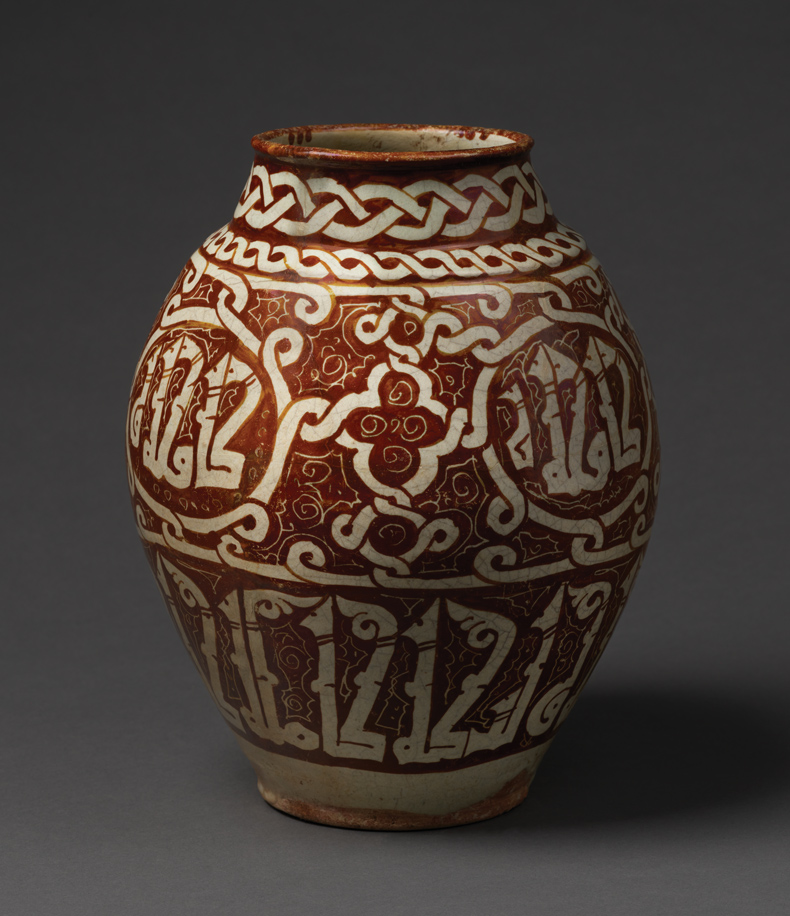
Conceptually only a short step away are the Hispano-Moresque earthenwares with tin glaze and cobalt and lustre decoration made in Manises near Valencia in the 15th century. One Manises example here bears the monogram IHS and gothic vine-leaf decoration, clearly made for the Christian market. Two large 14th-century jars, also from Manises, combine a brilliant cobalt with a bold calligraphic script.
Inevitably, perhaps, Katz also turned to the 16th- and 17th-century pottery of Ottoman Turkey, made in Istanbul or Iznik, to grow his collection of Islamic ceramics. Again, while blue-and-white and polychrome wares were produced in great numbers, outstanding examples are market rarities. The highlights include a refined blue and turquoise hexagonal tile related to those in the Circumcision Room at the Topkapi Palace in Istanbul. Dishes and jugs reflect the decorative range and palette of the Iznik potters, from the precise blue and white spirals of the so-called Golden Horn pattern to figurative and floral polychrome pieces decorated in blues, green, red and lilac.
Rimless dish with stonepaste slip, blue, green and lilac decoration and transparent glaze (c. 1545), Istanbul or Iznik, Turkey. Photo: courtesy Daniel Katz Gallery
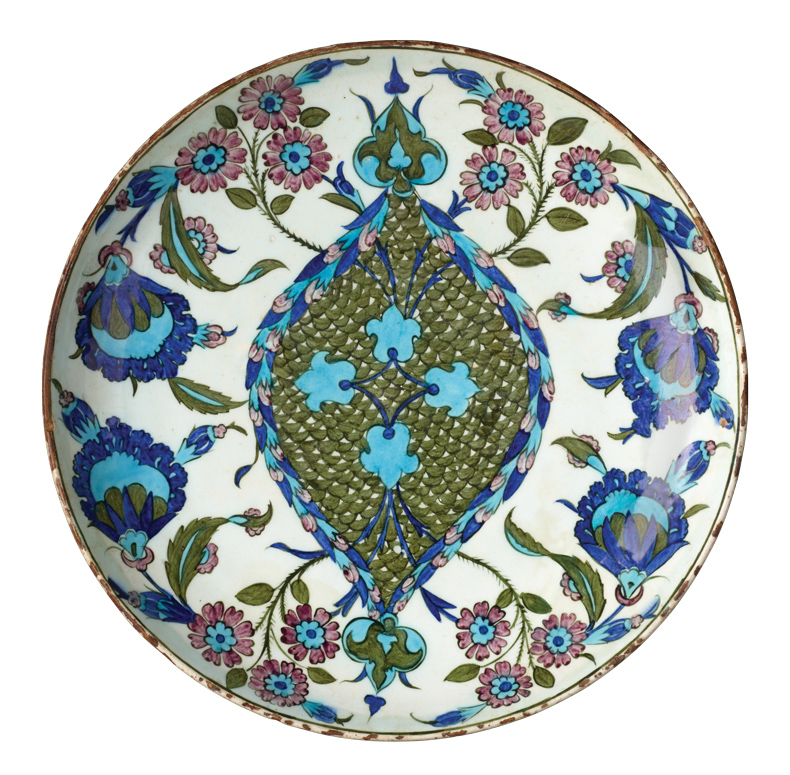
His most recent acquisition – which arrived the evening before our interview – possibly takes the collection into Ottoman Syria, too. It is a hexagonal tile decorated with one of the leitmotifs of Ottoman art, the cintamani pattern. Originally drawn from Buddhist imagery, its pairs of wavy lines and clusters of three roundels came to evoke the strength and power of the striped tiger and spotted leopard. Though perfectly painted, its glory is its intense turquoise glaze.
‘Who could fail to respond to that?’ Katz asks, gazing up to the top of the shelf, enchanted by his latest prize. He is hoping that visitors to his Mayfair gallery will not fail to do so, for he is unveiling this private collection – which is not for sale – for the launch of Islamic Week in London. Appropriately enough, the show’s title is ‘Setting the Heart on Fire’, an adaptation from a line of poetry inscribed on one of the Kashan bowls, and also the title of a lecture by Melanie Gibson on 25 October. ‘I just want to share these often unseen, rare and beautiful objects with a wider audience,’ he says, perhaps willing us all to open our eyes to different art forms and experiences. ‘It is a very small collection, but it is pretty intense,’ he enthuses. ‘I don’t feel it is complete, but then I don’t want hundreds of pieces. I am not that sort of collector.’
‘Setting the Heart on Fire – A Collection of Ceramics from the Islamic World’, is at Daniel Katz Gallery, London, from 21 October–3 November.
From the October 2023 issue of Apollo. Preview and subscribe here.
